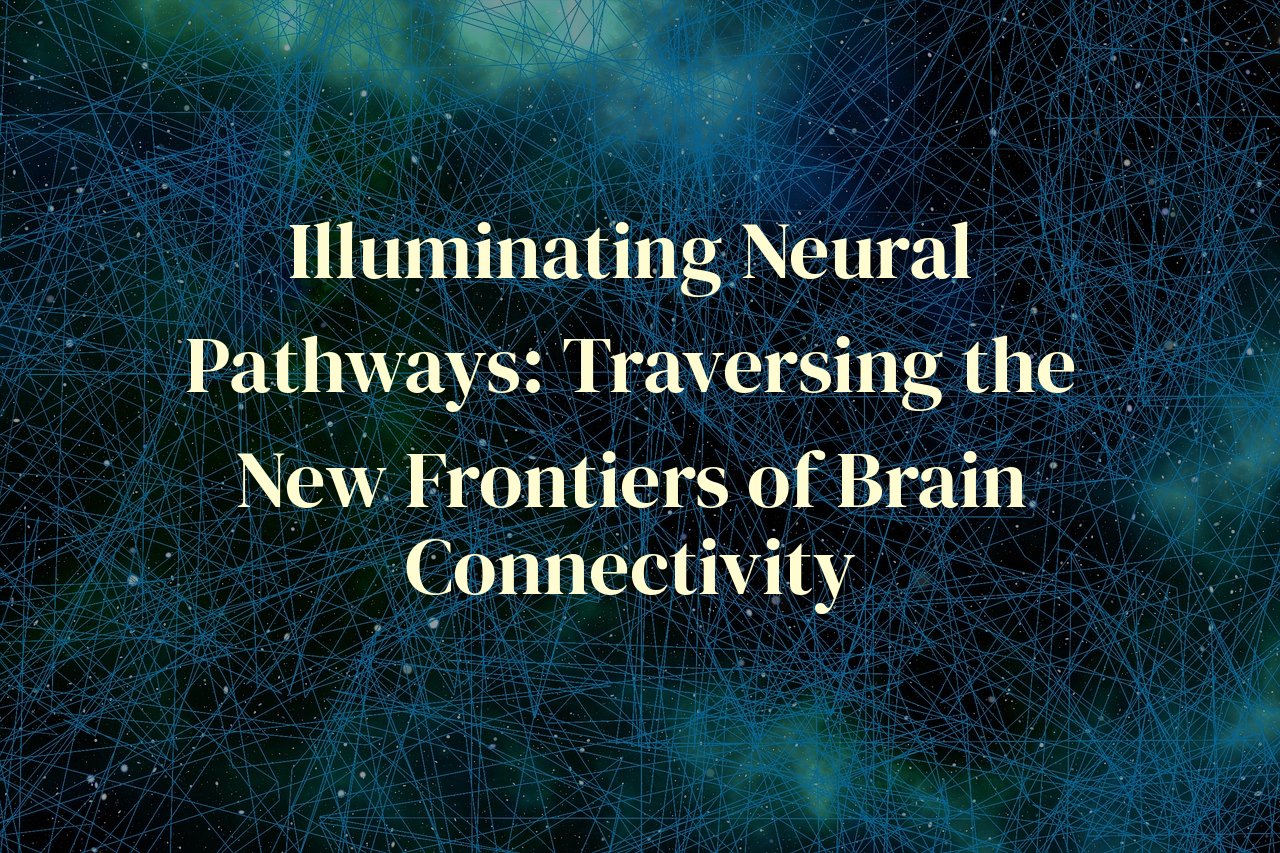
Embark on a riveting journey into the human brain, where we delve into the latest explorations of neural networks and the science propelling us forward. In this post, we will illuminate the intricacies of brain connectivity and the pioneering field of connectomics, which is unearthing stunning insights into how our brains function. By understanding the fabric of neural connections, we are poised to unlock mysteries surrounding cognition, behaviour, and neurological health.
Discover how these scientific insights translate to practical health benefits, enhancing our approach to mental health, neurodegenerative diseases, and personalized medicine. You, the reader, will find out how connectomic advances might one day revolutionize your healthcare experience, as we map the mind with unmatched precision and unravel potential pathways to wellness.
Table of Contents
Deciphering the Brain's Wiring: An Overview of Connectomics
Connectomics is a term that thrums with the pulse of modern neuroscience. It’s the map of neural connections within the brain, a comprehensive chart of its electrical wiring that governs our thoughts, feelings, and actions. As a professional blogger deeply ensconced in the world of health and medicine, I’ve watched with rapt attention as this field has exploded, morphing from a science fiction dream into a tangible, research-fueled discipline.
My fascination commenced when I first learned about the ‘Human Connectome Project’—a daring venture aiming to construct a network map of the human brain. This atlas of pathways seeks to explain how cerebral function correlates with behavior and cognition, which for someone with a professional interest in mental health, was akin to discovering a new language for understanding the human conditions.
Advancements in imaging and computational technologies fuel connectomics, with diffusion MRI being particularly central. It captures the movement of water molecules along neural pathways, lighting up the brain’s intricate circuitry in a way that’s almost poetical. Combined with innovative software, these images allow us to untangle the complex web of synapses and axons, to demystify the enigma of brain function.
But it’s not just the equipment that’s pioneering; it’s the minds behind it. Collaborative efforts among data scientists, neurologists, and psychologists bridge the abstract concepts of connectivity with tangible human experiences, fostering a holistic comprehension of what it means to sense, to feel, to think, to be.
In the symphony of the human brain, each neural pathway is a note. Connectomics is our conductor’s baton, guiding us through the melodious maze of cognition. Delving into this field, I’m continually awed by the prospect of unraveling the mysteries that reside within us all, eager for the verse of discovery that will define the next stanza of mental health advancement.
Linking Connectomics to Mental Health: Pathways to Understanding
The intricate tapestry of neural threads that form the human brain's communication network has long been shrouded in mystery. Venturing into the realms of connectomics, I find myself humbled by the immense potential to unravel the enigmatic ties between brain circuitry and mental health. This burgeoning field is akin to cartography for the mind, where each discovery lights a formerly dark corner of understanding.
In my explorations, I’ve been particularly captivated by the revelation that the patterns of connectivity within the brain can profoundly influence psychological well-being. The links between certain neural pathways and psychiatric conditions such as depression, anxiety, and schizophrenia are illuminating. For instance, aberrant connections in the prefrontal cortex, an area pivotal for decision-making and social behavior, could underpin the disordered thought processes seen in schizophrenia.
Furthermore, the use of connectomics to map individual networks of brain activity has revealed that each person’s ‘mental blueprint’ is as unique as their fingerprint. This insight suggests that connectivity anomalies associated with disorders such as autism spectrum disorder could eventually be identified, opening doors to highly personalized interventions that are shaped by the distinctive patterns of each individual’s brain.
Engaging directly with the transformational possibilities of connectomics has been profoundly moving. I’ve seen how understanding the architecture of the brain can demystify the origins of mental illness, replacing stigma with science. And it feels as though we are inching closer to heralding a new epoch in mental health care, one that honors the neural pathways as the deeply personal and intricate expressions of our humanity they truly are.
This personal journey through connectomics has quite literally changed the neural landscapes of my own understanding. As we continue to chart the vast neural constellations that govern our thoughts, emotions, and behaviors, I am filled with a sense of awe at the intricate beauty within our skulls, and a hopeful anticipation of the therapeutic horizons yet to be discovered.
Connectomics and Neurodegenerative Disease: Peering at Potential Treatments
The foray into the intricate labyrinth of the human brain has unveiled new horizons in understanding neurodegenerative diseases, an endeavor particularly close to my heart having witnessed its ravaging effects on a personal level. Connectomics, a term etched in the canvas of neuroscience, offers a beacon of hope, highlighting the potentiality of navigating through neural pathways to uncover bespoke treatments for ailments that have long eluded the grip of medical triumph.
In the grand odyssey of connectomics, one cannot help but marvel at the symmetry and complexity of neural circuits and how their degradation leads to disorders such as Alzheimer’s, Parkinson’s, and ALS. As our maps of the brain become increasingly refined, we observe glimmering threads of understanding emerge, suggesting that neurodegenerative diseases could be consequences of aberrant connections – a paradigm shift from the traditional focus on neurochemistry alone.
Armed with advancing technologies like high-resolution MRI and electron microscopy, researchers are piecing together the puzzle that is the connectome’s disruption in these diseases. It’s akin to tracing the fraying of a grand tapestry, identifying precisely where the threads have come undone. Techniques like optogenetics offer real-time interaction with neural circuits, allowing scientists not only to observe but also to alter electrical activity within the brain, offering unprecedented glimpses into disease mechanisms at play.
Understanding these complex networks paves the way for neuroprotective strategies that focus on reinforcing the brain’s connectivity before irreversible damage sets in. For instance, I am intrigued by the prospects of growth factor therapies aiming to rewire and strengthen neural connections, potentially halting or even reversing the progression of degenerative conditions. Such therapeutic avenues offer a radical departure from conventional symptomatic treatments, focusing instead on the underlying structural alterations of the brain’ connectome.
The connectomic approach also enables the development of biomarkers for early detection of neurodegeneration. Long before the manifestation of clinical symptoms, subtle changes in brain connectivity patterns can signal the onset of disease. Through my explorations and conversations with leading neurologists, I’ve come to appreciate this as a critical intervention window; for timing is everything when it comes to preserving cognitive function and maintaining quality of life.
As we stand at the threshold of what some may deem a neuroscientific renaissance, the intricate web of the brain’s connections beckons us with its mysteries and promises. The path is fraught with challenges, yet it is one of profound potential – the melding of empathetic care with precision medicine, to comprehend and combat the specters of neurodegeneration that shadow far too many lives.
Personalized Medicine Through the Lens of Connectomics: Tailored Therapies
Embarking on the journey of personalized medicine through the innovative lens of connectomics feels akin to navigating a cosmos within our very minds. The unraveling tapestry of brain connections not only fascinates me but also heralds a new era of customized therapies that address the unique complexities of each individual’s neural blueprint.
One deeply personal episode I recall involved a close friend grappling with an elusive neurological condition. Conventionally, treatment had been a scattergun approach, often missing the mark. When connectomics entered the frame, however, it was as though someone had switched on the lights. Mapping my friend’s neural pathways uncovered nuanced insights into the perturbed networks driving their symptoms, enabling clinicians to forge a tailored therapeutic regimen.
The implications here are profound. Through high-resolution brain mapping, connectomics distinguishes the intricate variances in synaptic connections and neural circuitries. This technology is breathing life into the notion of ‘precision medicine’, where therapies are sculpted with artisanal detail, reflecting the patient’s individualized neural landscape.
In practice, this could mean the development of targeted pharmaceuticals that course through the brain’s architecture with precision, rectifying synaptic misfires. Moreover, neural modulation therapies can be tuned to the exact frequency of a person’s brainwave patterns, mitigating distressing symptoms with astonishing accuracy.
Reflecting on the promise of connectomics, I envision a healthcare paradigm where no two treatment plans are identical – a future where we honor the singularity of each mind’s intricate wirings. With each connection mapped, we untangle a little more of the vast enigma that is the human experience, stepping closer to alleviating suffering in a manner that is intimately personal and undeniably transformative.
The Future of Connectomics: Ethical Considerations and Societal Impacts
The pioneering field of connectomics, wherein the comprehensive mapping of neural connections within the brain is revealing new horizons in neuroscience, is not just a scientific endeavor but also a topic of profound ethical and societal implications. As a health blogger who has extensively covered the progression of personalized medicine, the anticipation around connectomics is palpable, but so is the responsibility to navigate the ethical mazes that come with such advancements.
Considering the privacy concerns, the very notion of cataloguing the intricacies of an individual’s neural landscape raises significant questions. As much as this information can revolutionize understanding of mental health, it similarly risks becoming a tool for neuropsychological profiling that could lead to discrimination, be it in employment, insurance, or social standing. Safeguarding such incredibly personal data against misuse is a challenge that requires stringent policies and an informed public discourse.
There’s also the quandary of accessibility. The idea of personalized treatments, while hopeful, might widen the gap between those with access to cutting-edge healthcare and those without. This disparity could create a societal rift, amplifying the existing inequalities. As a proponent of equitable healthcare, I see an urgent need for deploying connectomics in a manner that bridges rather than exacerbates healthcare divides.
Moral dilemmas extend to the modification of neural pathways. The potential for ‘correcting’ neurodivergences may face resistance from communities that view such characteristics as integral to their identity rather than ailments needing treatment. This highlights the importance of a dialogue inclusive of diverse perspectives in shaping the course of therapeutics derived from connectomic research.
Lastly, the prospect of predictive analytics in mental health, as facilitated by connectomics, instigates a debate on the essence of human free will. If we can anticipate psychological trajectories, to what extent should we intervene? This question, which resonates with the readers of my health blog, is at the heart of an ethical puzzle that interlaces the threads of determinism and autonomy in the tapestry of our future society.
As we stand on the cusp of a connectomic era, these ethical considerations and societal impacts – privacy, accessibility, identity, and free-will – are just as crucial to my narrative as the scientific breakthroughs themselves. Igniting conversations on these topics is paramount for a future where connectomics enriches human health without compromise to our collective values.
Conclusion
In this quest to map the mind, the field of connectomics offers not just a deeper understanding of the brain’s formidable complexity but also hope for groundbreaking treatments and healthcare strategies. As we continue to navigate the labyrinth of neural connections, the promise of a healthier, more comprehensively understood human experience comes into sharper focus, paving the way for a brighter future in both medicine and psychology.



